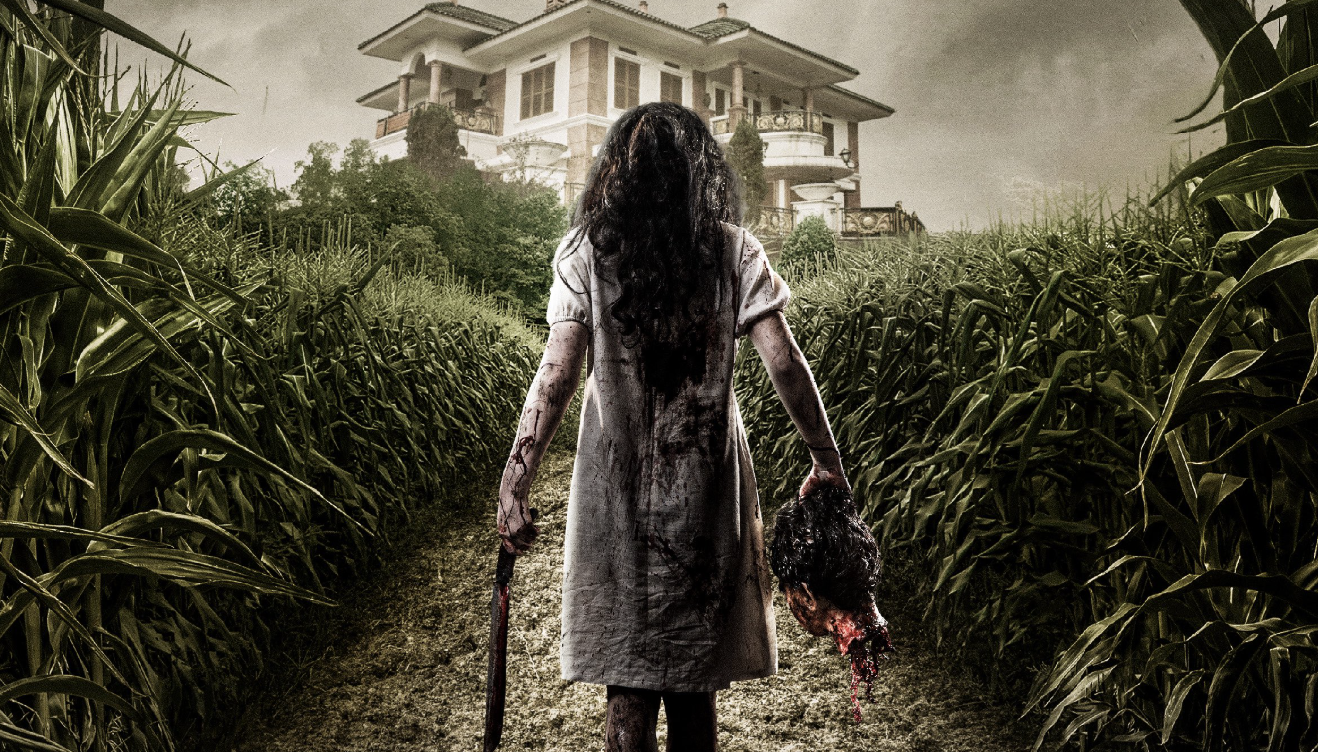
Soedjiman, the father in Sumala, faces a deeply emotional and terrifying dilemma when he realizes that his daughter Kumala is no longer entirely herself. After years of neglect and abuse toward her, he finds out that Kumala’s twin sister, Sumala, who had been killed at birth, is now haunting and slowly taking over Kumala’s body. This horror story reaches its climax when Soedjiman is forced to make a choice that could either save or doom his daughter, but his hesitation plays a crucial role in the tragic unfolding of events.
When Soedjiman first learns that the only way to save Kumala is to kill her before she turns ten years old—otherwise, Sumala’s spirit will permanently possess Kumala—he is faced with an unimaginable choice. Kumala, who has endured years of abuse, both physical and emotional, from her father and mother, is now the vessel for her twin sister’s evil spirit. However, Soedjiman’s reluctance to harm his daughter, despite the horrific circumstances, is rooted in a mix of guilt, love, and an unwillingness to confront the full scale of his mistakes. He cannot bear the thought of killing Kumala, even though her body is no longer entirely hers.
At the moment when Soedjiman has the chance to kill Kumala with the shaman’s blessed blade, he hesitates. His hesitation comes from deep-rooted guilt. Soedjiman has mistreated Kumala since she was born, never offering her the love and care that any child deserves. He knows that he has failed her as a father, that he has been cruel to her because of her disability and her resemblance to the ugly twin that was supposed to be sacrificed. His hesitation stems from the reality that he cannot undo the pain he caused his daughter, and he refuses to kill her, despite knowing that the evil spirit of Sumala is taking over her body.

This moment of hesitation has catastrophic consequences. Soedjiman’s failure to act decisively seals Kumala’s fate. By the time he finally realizes that Sumala’s spirit has fully taken over Kumala’s body, it is too late. Kumala is gone, and the evil spirit of Sumala is now in control. This also means that the deal made between Sulastri and the Devil, which was broken when Soedjiman killed the ugly child, is now fully in effect. Sumala, the spawn of the Devil, takes over Kumala’s body, and there is no way to separate them. Soedjiman’s indecision results in the permanent loss of his daughter, as Kumala’s spirit is no longer alive in her body.
As the story progresses, it becomes clear that Soedjiman’s hesitations were not just about killing his daughter but also about accepting the consequences of his actions. His emotional conflict prevents him from doing what needs to be done to protect the village and his family. While Kumala’s body survives for a while, it is now inhabited by Sumala’s spirit, which begins to wreak havoc on everyone around her. Soedjiman’s reluctance to take the final step and put his daughter down leads to more deaths, including the ones of his wife and the shaman who could have helped them. The situation spirals out of control because Soedjiman cannot bring himself to make the hard choice, one that would have ended the cycle of evil before it fully consumed them all.
In the end, Soedjiman’s hesitation to kill Kumala results in the destruction of his family and the village. His failure to act not only allows Sumala to fully possess Kumala’s body but also releases the evil that she carries. As the villagers live in fear, knowing that Sumala is still out there, the once peaceful community is forever scarred. Soedjiman’s inability to kill his daughter, despite the overwhelming evidence of what is happening to her, is a tragic moment that highlights the complexity of human emotions, especially when dealing with guilt, love, and the devastating consequences of neglect. His hesitation is a heartbreaking reminder of how even the most well-intentioned actions can lead to irreversible damage.
